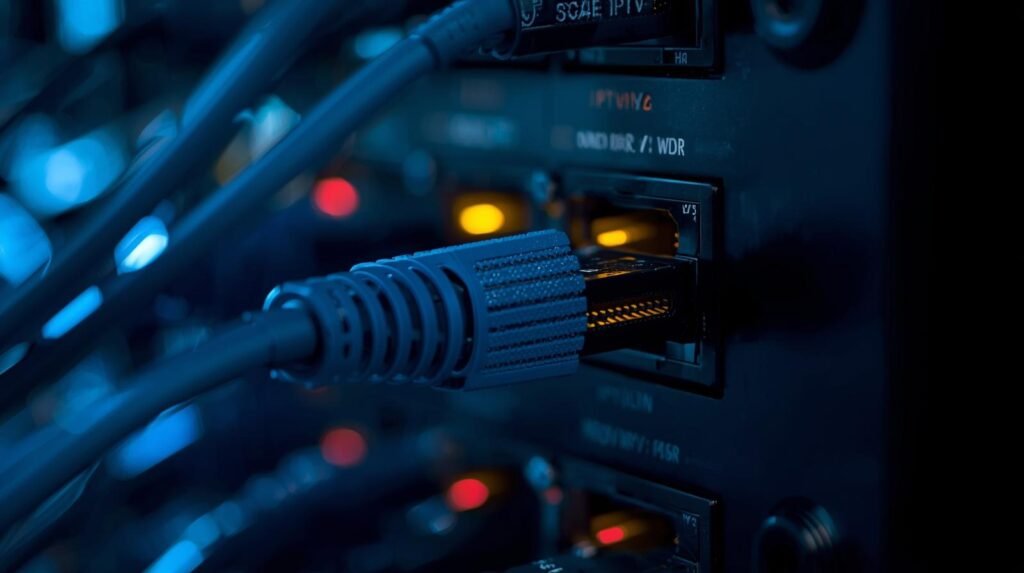The IPTV industry has experienced explosive growth over the last decade. This rise is largely driven by rapid technological innovation. From faster internet speeds and advanced compression to AI and cloud computing, technology has redefined how viewers consume television. IPTV has shifted from being a niche service to a mainstream entertainment choice. In this article, we explore the major fueling Technology in IPTV Growth and shaping the future of streaming.
1. The Rise of IPTV Growth and Technology Behind It
Internet Protocol Television (IPTV) delivers television content over the internet instead of traditional satellite or cable. Unlike conventional broadcasting, IPTVUK uses packet-switched networks, which offer greater flexibility and scalability. This structure allows for on-demand content, live streaming, and interactive features.
The Technology in IPTV Growth is directly linked to the evolution of internet infrastructure and digital tools. Early IPTV services suffered from buffering, low quality, and limited access. However, advancements in broadband technology, compression algorithms, and content delivery systems have made IPTV faster, smarter, and more reliable.
2. High-Speed Internet as the Backbone of IPTV

Broadband Expansion and Fiber-Optic Networks
Faster internet is the single most important factor behind IPTV’s expansion. Broadband penetration has increased globally, enabling households to stream HD and 4K content seamlessly. Fiber-optic networks, with their high capacity and low latency, have transformed streaming quality.
In the UK and many other regions, governments and private companies are investing heavily in broadband infrastructure. This expansion ensures that IPTV services reach both urban and rural communities, boosting overall adoption.
5G Networks and Mobile IPTV
The rollout of 5G has introduced a new dimension to IPTV. With ultra-low latency and speeds up to 100 times faster than 4G, 5G allows mobile devices to stream live TV and on-demand content in high definition.
This technological leap is particularly significant for live sports and events, where delays and buffering can ruin the viewing experience. 5G also supports more simultaneous users, making it ideal for densely populated areas.
3. Cloud Computing and Scalable Content Delivery
Centralized Management and Instant Updates
Cloud technology is at the heart of modern UK IPTV platforms. By hosting content in the cloud, providers can deliver massive libraries efficiently. Cloud-based infrastructure allows instant updates and channel additions without needing physical hardware changes.
This centralized system reduces costs, increases scalability, and improves reliability. Users benefit from faster load times and consistent streaming performance.
Content Delivery Networks (CDNs)
CDNs play a crucial role in ensuring smooth IPTV streaming . These networks distribute content across multiple servers worldwide. By caching data closer to the user, CDNs minimize buffering and latency.
For IPTV providers ,CDNs enable global reach without compromising speed. For users, this means uninterrupted streaming, even during peak hours.
4. AI and Machine Learning: Personalizing the IPTV Experience
Smart Recommendations and Content Discovery
Artificial Intelligence has revolutionized the IPTV UK landscape. Platforms use machine learning algorithms to analyze user behavior and preferences. Based on this data, they deliver personalized content recommendations.
Viewers no longer spend minutes scrolling through endless lists. Instead, AI curates relevant shows, movies, and live channels, boosting engagement and retention.
Predictive Analytics for Improved Services
Beyond recommendations, AI helps IPTV providers anticipate trends and optimize services. Predictive analytics can forecast peak viewing times, enabling platforms to allocate bandwidth intelligently. It also assists in identifying potential churn and improving customer support.
5. Advanced Compression Technologies
Efficient Streaming with Modern Codecs
Video compression is essential for high-quality streaming. Modern codecs like H.265 (HEVC) and AV1 allow IPTV services to deliver sharp visuals at lower bitrates.
Efficient compression ensures smooth playback even on slower connections. It also reduces data costs for both providers and consumers, making IPTV more accessible.
Supporting 4K and 8K Content
With advancements in compression, IPTV can now support 4K and even 8K resolutions without excessive bandwidth demands. This brings cinema-like quality to living rooms and mobile devices alike.
The ability to stream ultra-high-definition content gives IPTV a competitive edge over traditional broadcasting methods.
6. Smart Devices and Cross-Platform Integration

The Role of Smart TVs and Streaming Devices
The widespread availability of smart TVs and streaming sticks has made IPTV more accessible. These devices come pre-installed with IPTV apps, making setup quick and simple.
Users can switch between live TV, on-demand content, and third-party apps seamlessly. The integration between hardware and software creates a user-friendly experience that drives IPTV adoption.
Mobile Apps and Multi-Device Access
IPTV isn’t limited to televisions. Dedicated mobile apps allow users to watch content on smartphones, tablets, and laptops. Cross-platform synchronization ensures that viewers can pause on one device and resume on another without interruptions.
This flexibility has made IPTV a preferred choice for modern, on-the-go lifestyles.
7. Blockchain Technology: Enhancing Security and Transparency
Preventing Piracy and Protecting Content
Piracy remains a challenge for IPTV providers. Blockchain technology offers innovative solutions by creating transparent, tamper-proof records of content ownership and distribution.
Through blockchain, providers can verify authenticity and prevent illegal streams, safeguarding intellectual property.
Smart Contracts and Payment Solutions
Smart contracts automate subscription payments and access management. These decentralized solutions reduce fraud, improve accountability, and streamline transactions between providers and subscribers.
8. AR and VR: Shaping the Technology in IPTV Growth
Immersive Experiences Through Augmented Reality
AR technology enhances live broadcasts by overlaying real-time statistics, player profiles, or interactive ads on screens. Sports fans can view extra information without leaving the stream.
This interactive layer keeps audiences engaged and adds value to IPTV services.
Virtual Reality and Next-Level Entertainment
VR brings immersive experiences to IPTV, enabling viewers to attend concerts, live events, or shows from their homes. VR headsets and IPTV integration create unique entertainment experiences that traditional TV cannot match.
As VR devices become more affordable, their integration with IPTV will continue to grow.
9. Internet of Things (IoT) and Smart Home Integration
Voice Assistants and Smart Controls
IoT connects IPTV with smart home ecosystems. Viewers can use voice commands to change channels, search for shows, or adjust volume through assistants like Alexa or Google Home.
This hands-free convenience improves accessibility and user experience.
Personalized Viewing Environments
Smart home systems adjust lighting, sound, and other settings based on viewing preferences. This creates a fully immersive and customized entertainment environment.
10. Cybersecurity in IPTV

Protecting User Data
With increased connectivity comes higher risk. IPTV platforms invest in encryption, secure authentication, and data protection protocols to safeguard user information.
Cybersecurity is essential for maintaining trust and compliance with regulations.
Anti-Piracy Measures
Advanced digital watermarking and monitoring tools help track unauthorized streams. By identifying and shutting down illegal sources, providers protect both content and revenue.
The Future of Technology in IPTV Growth
The IPTV landscape will continue to evolve with emerging technologies. AI will become even more intelligent, offering hyper-personalized experiences. Cloud computing will scale further, making content delivery faster and cheaper.
5G will power ultra-low latency streams, while AR and VR will redefine entertainment. As blockchain matures, secure and transparent content ecosystems will become the norm. The integration of IoT will make IPTV a central part of smart homes.
Conclusion
Technology is the driving force behind IPTV’s phenomenal growth. High-speed internet, advanced compression, AI, and cloud computing have laid the foundation for seamless streaming experiences. Emerging technologies like blockchain, AR/VR, and IoT are pushing boundaries even further.
As these innovations continue to develop, IPTV will become more immersive, secure, and accessible. The role of technology in IPTV growth is not just influential — it’s transformative. FOR better experience get FREE TRAIL
